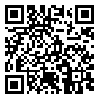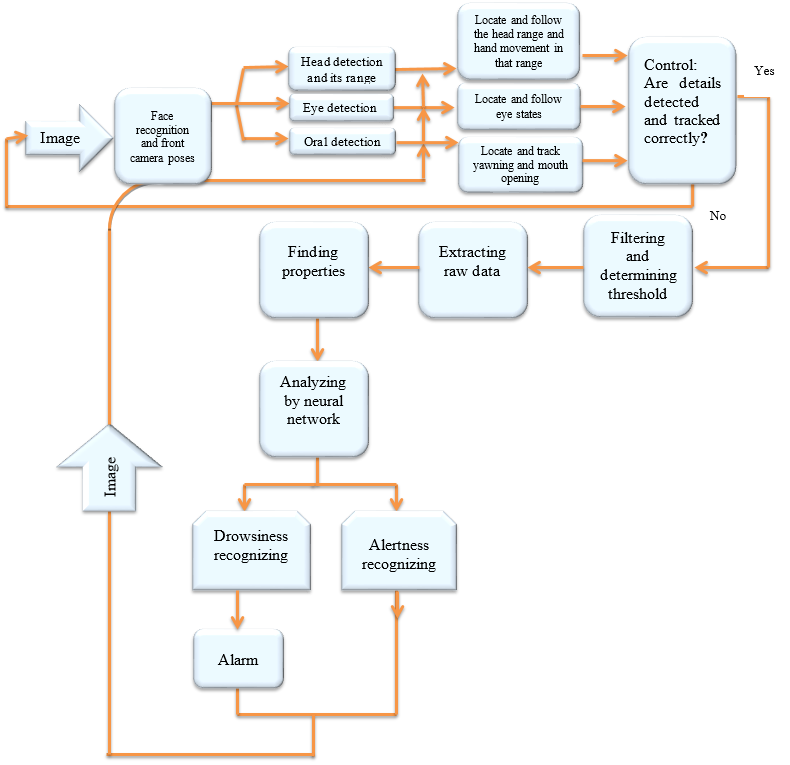Volume 13, Issue 1 (3-2023)
J Health Saf Work 2023, 13(1): 164-187 |
Back to browse issues page
Download citation:
BibTeX | RIS | EndNote | Medlars | ProCite | Reference Manager | RefWorks
Send citation to:



BibTeX | RIS | EndNote | Medlars | ProCite | Reference Manager | RefWorks
Send citation to:
Nik Afshar N, Kamali M, Aklaghi Pirposhteh E, Askai Majabadi H, Amanat N, Poursadeqiyan M. A Review of the Studies on Driver Drowsiness Detection Sensors and Proposing Hybrid Diagnostic Methods and Efficient Model Design. J Health Saf Work 2023; 13 (1) :164-187
URL: http://jhsw.tums.ac.ir/article-1-6809-en.html
URL: http://jhsw.tums.ac.ir/article-1-6809-en.html
Naser Nik Afshar1 
 , Mostafa Kamali2
, Mostafa Kamali2 
 , Elham Aklaghi Pirposhteh3
, Elham Aklaghi Pirposhteh3 
 , Hesamedin Askai Majabadi4
, Hesamedin Askai Majabadi4 
 , Nasir Amanat5
, Nasir Amanat5 
 , Mohsen Poursadeqiyan *
, Mohsen Poursadeqiyan * 
 6
6

 , Mostafa Kamali2
, Mostafa Kamali2 
 , Elham Aklaghi Pirposhteh3
, Elham Aklaghi Pirposhteh3 
 , Hesamedin Askai Majabadi4
, Hesamedin Askai Majabadi4 
 , Nasir Amanat5
, Nasir Amanat5 
 , Mohsen Poursadeqiyan *
, Mohsen Poursadeqiyan * 
 6
6
1- Department of Rehabilitation Management, University of Social Welfare and Rehabilitation Sciences, Tehran, Iran
2- Department of Health Information Sciences, Faculty of Management and Medical Information Sciences, Kerman University of Medical Sciences, Kerman, Iran | Vice Chancellery of Health, Mashhad University of Medical Sciences, Mashhad, Iran
3- Department of Occupational Health Engineering, School of Medical Sciences, Tarbiat Modares University, Tehran, Iran
4- Nursing Care Research Center, Semnan University of Medical Sciences, Semnan, Iran
5- Nursing Care Research Center, Semnan University of Medical Sciences, Semnan, Iran | Emergency nursing department, Nursing and midwifery Faculty, Semnan University of Medical Sciences, Semnan, Iran
6- Social Determinants of Health Research Center, Ardabil University of Medical Sciences, Ardabil, Iran ,poursadeghiyan@gmail.com
2- Department of Health Information Sciences, Faculty of Management and Medical Information Sciences, Kerman University of Medical Sciences, Kerman, Iran | Vice Chancellery of Health, Mashhad University of Medical Sciences, Mashhad, Iran
3- Department of Occupational Health Engineering, School of Medical Sciences, Tarbiat Modares University, Tehran, Iran
4- Nursing Care Research Center, Semnan University of Medical Sciences, Semnan, Iran
5- Nursing Care Research Center, Semnan University of Medical Sciences, Semnan, Iran | Emergency nursing department, Nursing and midwifery Faculty, Semnan University of Medical Sciences, Semnan, Iran
6- Social Determinants of Health Research Center, Ardabil University of Medical Sciences, Ardabil, Iran ,
Abstract: (1219 Views)
Introduction: In recent years, driver’s drowsiness has been one of the leading causes of road accidents, which can lead to physical injuries, death, and significant economic losses. Statistics show that an efficient system is needed to detect the driver’s drowsiness, that gives the necessary warning before an unfortunate event occurs. Therefore, this review study was conducted to investigate the studies on driver’s drowsiness sensors and to present a combination of diagnostic methods and an efficient model design.
Material and Methods: This narrative review study was conducted through a systematic search using “driver” and “drowsiness detection” as search keywords in indexing databases including Scopus, PubMed, and Web of Sciences. The search encompassed the latest related research conducted in this field from 2010 to September 2020. The reference lists were also reviewed to find further studies.
Results: In general, researchers evaluate driver’s drowsiness using three methods including vehicle-based measurement, behavioural measurement, and physiological measurement. The details and how these measurements are made make a big difference to the existing systems. In this study, which is a narrative review, the three mentioned measurements were examined using sensors and also the advantages and limitations of each were discussed. Real and simulated driving conditions were also compared. In addition, different ways to detect drowsiness in the laboratory were examined. Finally, after an analytical comparison of the methods of diagnosing drowsiness, a diagram was presented based on which an efficient and combined model was developed.
Conclusion: Taking into account the limitations of each of the methods, we need a combination of behavioural, performance, and other measures to have an efficient drowsiness diagnosing model. Such model must be tested using simulations and in real world situations.
Material and Methods: This narrative review study was conducted through a systematic search using “driver” and “drowsiness detection” as search keywords in indexing databases including Scopus, PubMed, and Web of Sciences. The search encompassed the latest related research conducted in this field from 2010 to September 2020. The reference lists were also reviewed to find further studies.
Results: In general, researchers evaluate driver’s drowsiness using three methods including vehicle-based measurement, behavioural measurement, and physiological measurement. The details and how these measurements are made make a big difference to the existing systems. In this study, which is a narrative review, the three mentioned measurements were examined using sensors and also the advantages and limitations of each were discussed. Real and simulated driving conditions were also compared. In addition, different ways to detect drowsiness in the laboratory were examined. Finally, after an analytical comparison of the methods of diagnosing drowsiness, a diagram was presented based on which an efficient and combined model was developed.
Conclusion: Taking into account the limitations of each of the methods, we need a combination of behavioural, performance, and other measures to have an efficient drowsiness diagnosing model. Such model must be tested using simulations and in real world situations.
Type of Study: Review |
Received: 2023/03/13 | Accepted: 2023/03/30 | Published: 2023/03/30
Received: 2023/03/13 | Accepted: 2023/03/30 | Published: 2023/03/30
Send email to the article author
| Rights and permissions | |
 |
This work is licensed under a Creative Commons Attribution-NonCommercial 4.0 International License. |





